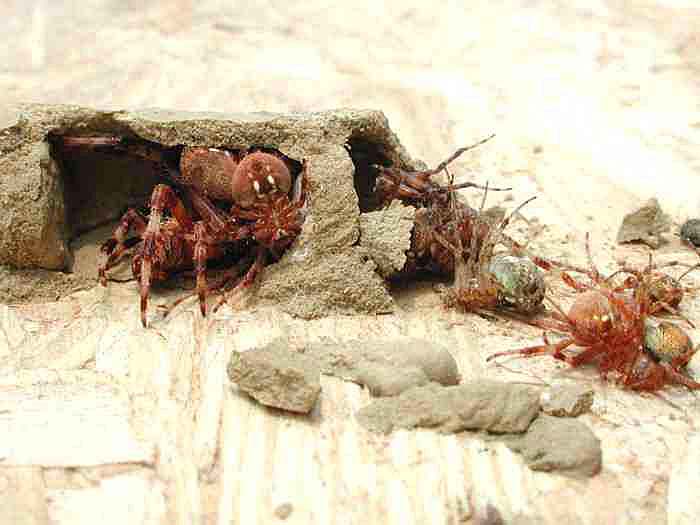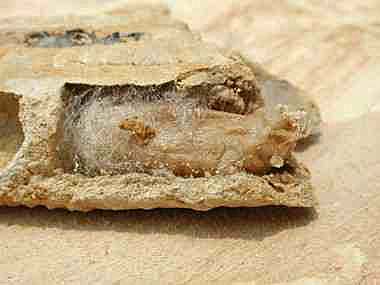|
|
|
Wonderful,
Wonderful Wasps!*
Spider Predators
On a summer day, after a rain, look at the mud puddles that are drying up. Perhaps you will see this little gal. She moves in quick jerks, and, if she flits just right, and the sun catches her black body, she will shine a deep blue color. For some strange reason, she is rolling up a little ball of mud to carry off.
|
|
|
In the right hand picture you can see what she's doing. She's building her nests in which to raise her babies. To make a nest of dried mud, she has to find places where the rain will never come. I've found most of these nests just under a roof overhang, in open sheds, or in abandoned buildings. Notice that she has had different colored muds for different parts of her nest.
Depending on where you are, she is called a blue devil, a mud dauber, or an organ pipe wasp. Did you notice the nest looks a little like the pipes that are out on display with pipe organs?
Because there are so many names for her, sometimes it's confusing for people from different places to know what we are talking about, so we use the scientific name to be sure. This lady is called "Trypoxylon politum."

Image
Copyright 2002, David L. Green
Unauthorized use prohibited
The
spiders inside the nest
compartment
If you
break open her nest (only do one, because we don't want to destroy a
very good friend),
you will see that each tube has several compartments, separated by mud
walls. In each
compartment is a baby wasp, and a bunch of spiders. The spiders are
alive, but just barely
moving. They were paralyzed by a sting from the mother wasp. She has
caught the spiders to
be food for her babies. That's why she is called a predator. If you
don't know what a
"predator" is, you might want to look that up in a dictionary.
|
|
|
Soon the larva will spin some silky threads to make a case, in which to change into a "pupa" (another word to look up in the dictionary).

Image
Copyright 2002, David L. Green
Unauthorized use prohibited
A
pupa inside the broken nest.
The pupa will slowly turn black, until it looks quite dead. But do not fear, another wasp will soon emerge from the dead-looking pupa.
Many people are afraid of these little blue wasps. They can sting if you grab them, but they are so busy doing their job that they pay you little attention, if you just leave them alone. While I was taking these pictures, mother wasps were flitting all around me, even a couple of times landing right on me, when I blocked their way. But they never once tried to sting me.*
If you see them around your home, watch them to learn about these wonderful creatures, and try to not let anyone knock down their nests or kill them. If you have them nearby, you will not likely ever be bitten by poisonous black widow or hobo spiders.
*Note on Protection from Stings